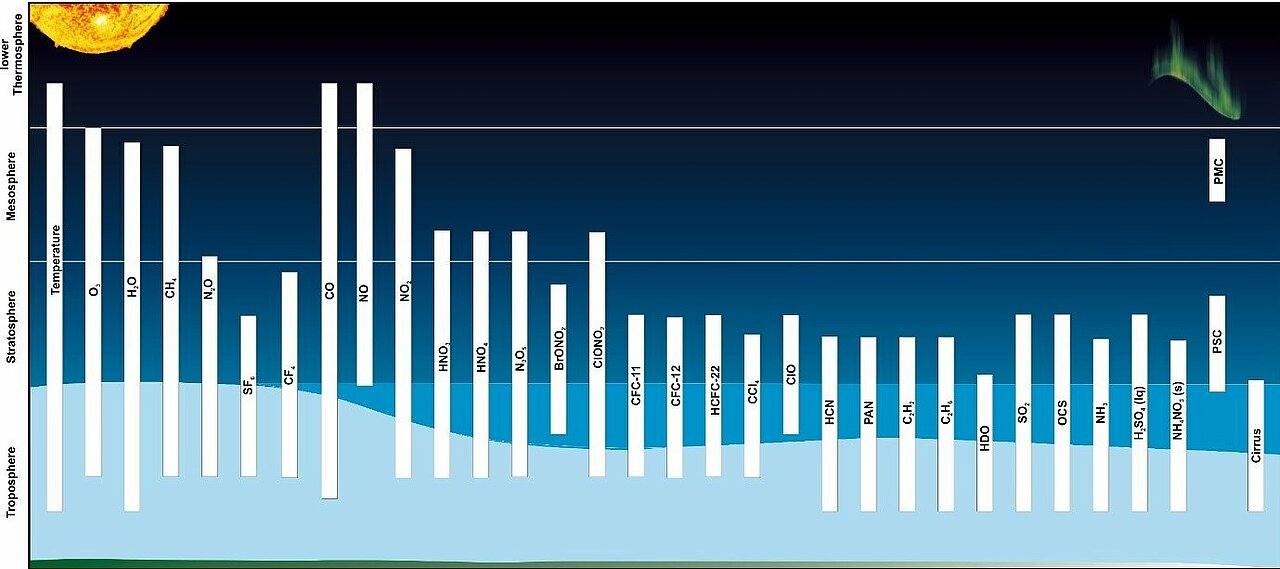Products and Applications
©KIT
CAIRT will provide global observations of temperature, ozone (O3), water vapour (H2O), as well as key halogen compounds (chlorofluorocarbons (CFCs) and other source gases, ClO, ClONO2, BrONO2) and nitrogen compounds (including NO, NO2, N2O5, HNO3, PAN).
Long-lived tracers (such as N2O, CH4, SF6, CF4) will provide information on transport, mixing and circulation changes. CAIRT will deliver essentially a complete budget of stratospheric sulfur (by observations of OCS, SO2, H2SO4-aerosols), as well as observations of ammonia (NH3) and ammonium nitrate aerosols (NH4NO3).
Biomass burning and other pollution plumes, and their impact on ozone chemistry in the UTLS region, will be detected from observations of HCN, CO and other volatile organic compounds. The potential to measure water vapour isotopologues will further help to constrain water vapour and cloud processes and interactions at the Earth’s surface.
The high spatial resolution temperature measurements will provide the momentum flux, phase speed and direction of atmospheric gravity waves and thus constrain the driving of the large-scale circulation.
CAIRT data will open new scientific opportunities to study atmospheric dynamics, trace gas transport and chemical transformations, from the troposphere to the lower thermosphere. Near-real-time radiance data from CAIRT will be available for direct assimilation into numerical weather prediction models as well as air quality models to improve forecasts and process understanding.


